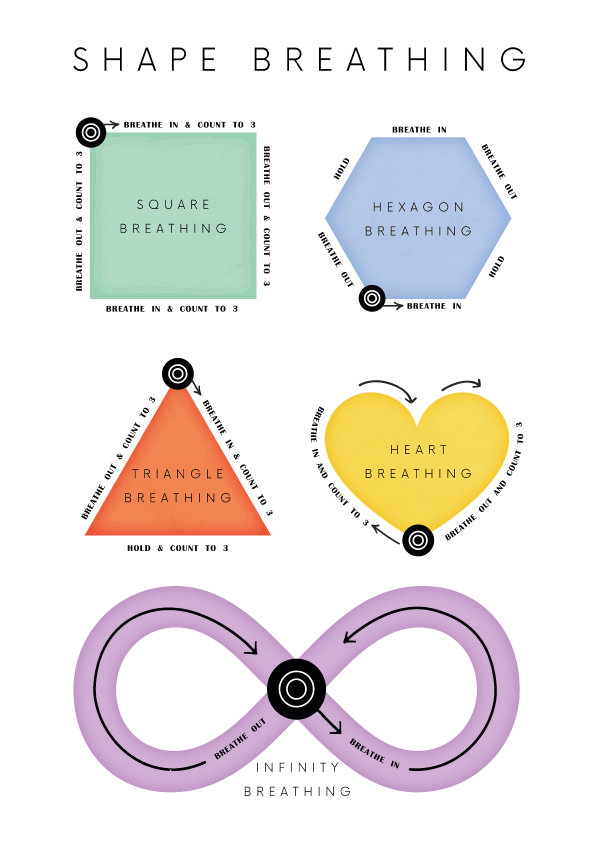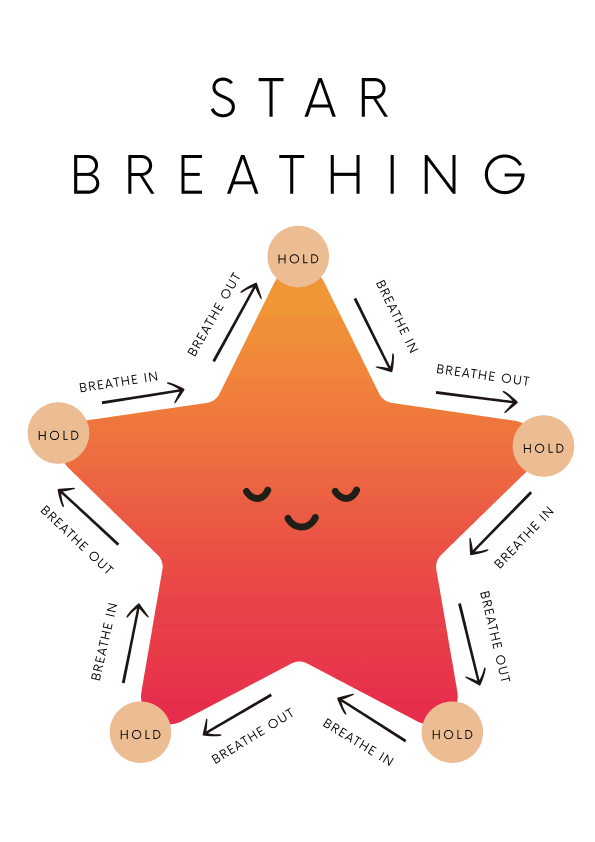The provided document offers a simple and engaging guide to different relaxation techniques, primarily focusing on visual breathing exercises. These exercises, which use various shapes like a square, triangle, and hexagon, are designed to help young children learn how to calm their minds and bodies. By following these visual cues, children can practice mindful breathing, an important skill for managing emotions and stress. This resource is an excellent tool for introducing relaxation techniques in a way that is fun, easy to follow, and effective for early learners.
Relaxation Techniques: Visual Breathing Exercises for Calm
The document provides several visual guides to breathing exercises, such as “Square Breathing,” “Triangle Breathing,” and “Hexagon Breathing”. These guides instruct children to breathe in and out while following the path of a shape. For instance, in “Square Breathing,” the child is told to “breathe in & count to 3” while following one side of the square and then “breathe out & count to 3” on the next. This method makes practicing relaxation techniques a simple and engaging activity, helping children to regulate their breathing and focus their attention on the task at hand.

Relaxation Techniques: Building Emotional Regulation Skills
In addition to geometric shapes, the document also introduces “Heart Breathing” and “Infinity Breathing”. These exercises use familiar shapes to guide the rhythm of breathing. “Heart Breathing” instructs children to “breathe in and count to 3” on one side of the heart and “breathe out and count to 3” on the other. By regularly practicing these visual breathing exercises, children can develop essential emotional regulation skills. The document provides effective and easy-to-learn relaxation techniques that can be used in the classroom or at home to help children find a sense of calm.
Earth Facts for Kindergarten: Exploring the Sun and Planets
